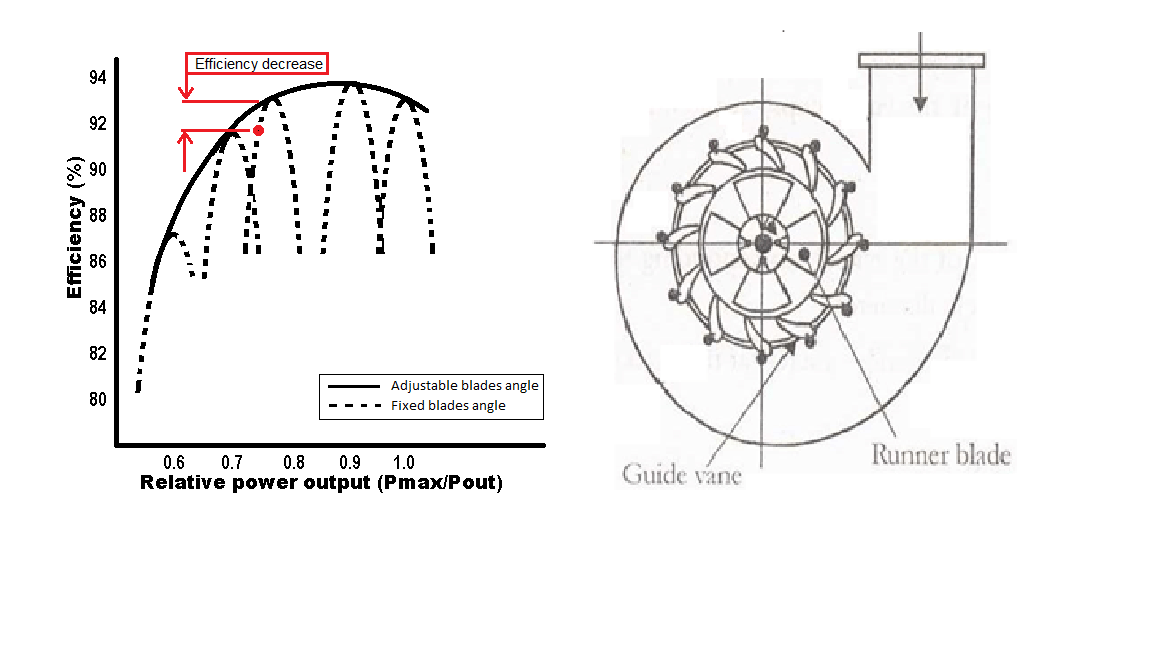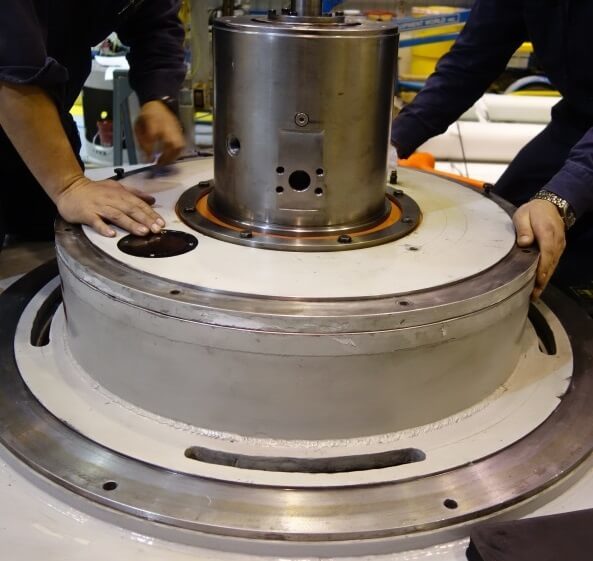Other maintenance issues
Efficiency issues are one of the many results of problems associated with oil leakage. In some cases, oil leakage does not result in problems with runner blade positioning. However, it can lead to other types of malfunctions, such as:
- Oil escaping into the environment.
- Mechanical parts and mechanisms deteriorating.
- Cavitation of turbine blade surfaces.
- Protection devices activating and so preventing start-up and operation of the turbine/alternator group.
- A dangerous drop in oil pressure in the wicket gate.
- Part wear caused by the constant movement of the servo valves, servomotors and runner blades to compensate for oil leakage.
Over time, some issues can lead to a complete system failure, resulting in costly unplanned major overhauls, while others may demand unplanned maintenance.
Low-cost diagnostics can lead to major savings
Low-cost diagnostics are possible and can quickly yield a return on investment. However, operators often hesitate to invest in corrective maintenance, since it is not always easy to quantify the benefits when the problem is identified. On the other hand, once the problem worsens, it becomes easy to determine its impact on turbine performance and to decide whether a repair is economically viable or when it will become so. Such diagnostics can also optimize the service life of the high-pressure oil circuit and other components that require planned overhauls by helping to develop a mitigation plan and ensure that replacement parts are readily available.
Finding the location of a leak is often challenging. Many types of leaks can occur in a hydraulic system. It is important to take an iterative approach in order to gradually rule out each possibility:
- The speed governor
- Pump and hydraulic unit components (HPU)
- Gasket seals and oil head components
- Gasket seals and runner blades
- Locating the problem using instruments added to the hydraulic system
- Sampling oil at different points in the system
- Checking for possible leakage inside the turbine
- Noise and heating of components and pipe work
- Reviewing maintenance reports and most recent modifications made to the system
- Reviewing data recorded by the PI/SCADA system, to help identify the source of an issue.
The BBA team has gained solid expertise in this area, having participated in diagnostic testing both in power plants and remotely, to identify various types of oil leakage issues in Kaplan turbine runner-blade actuating systems. Our proven methodology makes it possible for clients to maximize the use and profitability of existing equipment.









